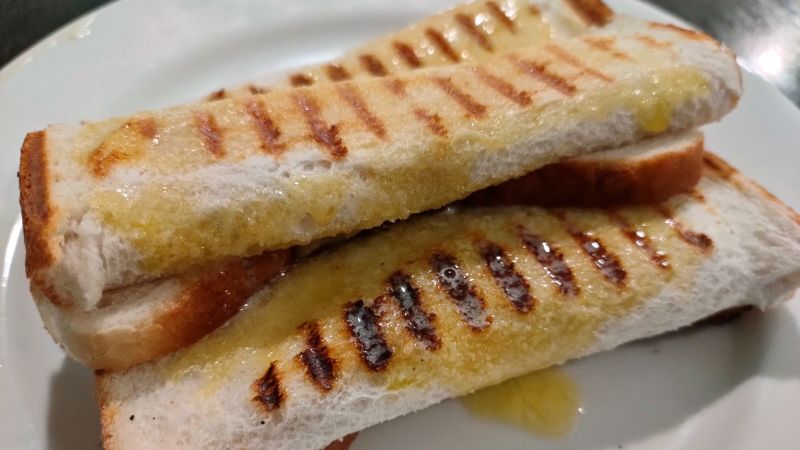A cheese roll may seem simple: it’s basically a slice of bread with cheese-based filling, rolled up and toasted until slightly crispy.
Yet these humble snacks hold a special place in the hearts of many people at the bottom of the South Island, the more southern of New Zealand’s two main islands – or “Deep South,” as the region closer to Antarctica than the Equator is sometimes called.
Margaret Peck remembers her first cheese roll. She was a teenager at the beach near Invercargill, almost at the end of the South Island and New Zealand’s southernmost city – it’s also home to the world’s southernmost Starbucks and McDonald’s outlets.
Her husband Mark Peck remembers his first, too. It came after arriving as a kid from Kentucky.
“I’d never had them before. And, ooohhh – they were good! I got hooked, well and truly!”
Decades later, there’s a reason their memories are so clear.
“The cheese roll means celebrations, events, gatherings, homecomings, fundraisers,” explains Donna Hamilton, who makes cheese rolls at The Batch in Invercargill, which she co-owns with husband Gareth.
“It means people, family and laughter. They’re the ultimate comfort food.”
Immigration and identity
Pastures full of grazing cows are a common sight among the rolling green hills of Southland, the southern part of the Deep South. Milk and cheese are plentiful. But cows are not native to New Zealand, and cheese rolls were developed mostly by European immigrants and their descendants.
According to emeritus professor Helen Leach, a specialist in food anthropology at the University of Otago in Dunedin (the Deep South’s largest city), the first recipes for a version of cheese rolls appeared in South Island cookbooks in the 1930s.
They gained popularity in the 1950s and 60s, as sliced bread became more common in New Zealand, becoming a staple at school fundraisers.
But cheese rolls are a distinctly regional cuisine. Leach’s research shows the first recipe for an “authentic” cheese roll with a pre-cooked cheese filling did not appear in a cookbook in the more populous North Island until 1979. Even now, it’s uncommon to find cheese rolls at North Island cafes.
Yet the Pecks wanted to offer them in the capital when they opened Little Peckish in Wellington – at the bottom of the North Island – in 2009, after Mark Peck finished a career in Parliament; his constituency was Invercargill.
“I’m a Southlander,” explains Margaret Peck, who grew up north of Invercargill near the town of Winton. “I wanted to have something that’s part of my identity.”
There was an adjustment, though: at first, patrons were eating cheese rolls with a knife and fork. She’s adamant cheese rolls are eaten with your hands.
West of Invercargill is Riverton, a small town along an estuary formed by the meandering Aparima and Pourakino rivers.
It’s here Cazna Gilder makes cheese rolls at The Crib. She says “southern sushi” – as cheese rolls are sometimes called, because they’re “as popular as sushi” – are synonymous with regional identity.
“A cheese roll’s honest,” she explains. “It’s not pretentious. I think it’s because we’re so down-to-earth.”
There are many variations of a cheese roll.
“Traditions are handed down from generation to generation,” Hamilton says. “Children living overseas have sent home for the correct recipe to make for flatmates in London to overcome homesickness.”
Mark Heffer, who makes cheese rolls at his café, Industry, in Invercargill, says a “proper” cheese roll needs a few things: “[The bread has] got to be rolled and not folded, lots of cheese and fresh red onion, some sort of mayo to give it that creamy flavor, and we like to add a little bit of sour cream and chopped parsley. Toasted but not too toasted, it must be golden brown and topped with lashings of butter.”
“You should need to wash your hands and face after eating a proper cheese roll,” he adds.
Some have a slightly different take, however.
One example is north of Southland, below the snowcapped peaks of The Remarkables, at Rātā. Their cheese rolls are garnished with locally-sourced preserved apricots, hazelnuts, truffle oil and honey from the southern rātā tree, found on the west coast of the South Island. Served as an entrée, founder Fleur Caulton says they’re a popular dish at the Queenstown restaurant.
“Everyone has their version of a roast. We have our version of a cheese roll.”
Bucolic as it may seem in an area where neighbors can leave doors unlocked and penguins visit beaches, life’s changing like everywhere else. For instance, the planned 2024 closure of the aluminum smelter south of Invercargill at Tiwai Point – Southland’s single-largest employer – could mean the loss of hundreds of jobs.
Other changes are also afoot. The shutting of New Zealand’s borders amid the coronavirus pandemic has led to an increase in domestic tourists, but there are concerns about what the absence of international visitors could mean for the future. Large parts of central Invercargill have also been demolished. Rising from the rubble will be a business and shopping complex that could cost NZ$165 million (about US$120 million).
But cheese rolls continue to play an important part in the story of the Deep South. Rātā’s Caulton says “1,800 dozen” cheese rolls were made for a fundraiser at Queenstown’s Wakatipu High School last year, for example.
The morning of our interview, The Crib’s Gilder said she’d made about 200 in anticipation of demand from visitors attending the Burt Munro Challenge motorcycle competition, one of Southland’s largest annual events.
“As long as there are people in Southland, the cheese roll will live on forever,” says Industry’s Heffer.
Adds Hamilton: “The gathering of people, the comradeship, the support – right now, I would say the world needs more cheese rolls.”
Read the full article here


